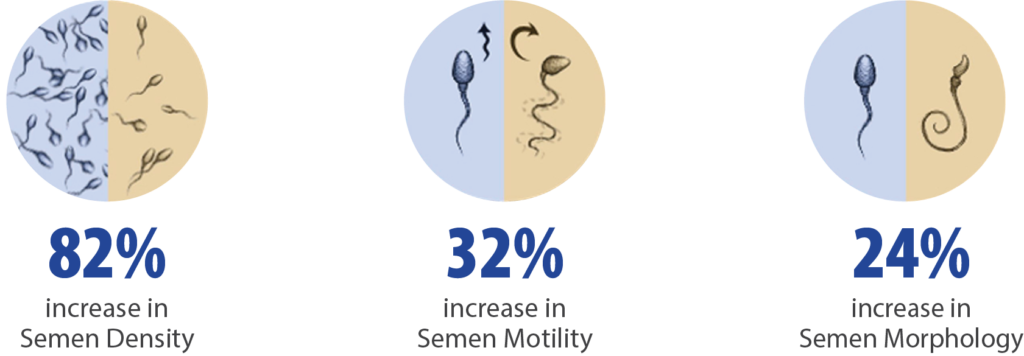
According to the World Health Organization, 1 in 6 people are affected by difficulty conceiving at some point in their life.
One major contributor to this is the older age in which couples are trying to conceive. As men and women age, there is a significant decline in sperm and egg quality and quantity, leading to difficulty conceiving.
Emerging research surrounding reproductive health has led scientists to identify a link between fertility among both men and women, and mitochondrial function and energy production. With age, mitochondrial function and energy production decreases while free radicals resulting in oxidative stress in reproductive tissue increases, negatively impacting fertility.
Ubiquinol, the active antioxidant form of coenzyme Q10 (CoQ10), plays a vital role in supporting the mitochondria and producing cellular energy in reproductive cells. Several studies exemplify its valuable fertility benefits, and as such, ubiquinol may be considered for couples trying to conceive.
Clinical Studies
In a double-blind, placebo controlled randomized study, 228 infertile men with idiopathic Oligoasthenoteratozoospermia (low sperm count and motility) were given 200mg Kaneka Ubiquinol a day for 26 weeks. The results showed that ubiquinol significantly improved semen parameters.

In additional studies of 60 men and 50 infertile women aged 20 to 40 years old, each was given 150mg Ubiquinol a day for 4 months. The results showed that ubiquinol significantly improved both sperm and hormonal parameters.


References
Safarinejad, Mohammad Reza et al. (2012). Effects of the Reduced Form of Coenzyme Q10 (Ubiquinol) on Semen Parameters in Men with Idiopathic Infertility. Journal of Urology. Volume 188.
Thakur, Amar et al. (2015). Effect of Ubiquinol Therapy on Sperm Parameters and Serum Testosterone Levels in Oligoasthenozoospermic Infertile Men. Journal of Clinical and Diagnostic Research. Volume 9.
Thakur, Amar et al. (2015). Effect of Ubiquinol on Serum Reproductive Hormones of Amenorrhic Patients. Indian Journal of Clinical Biochemistry. Volume 31.

